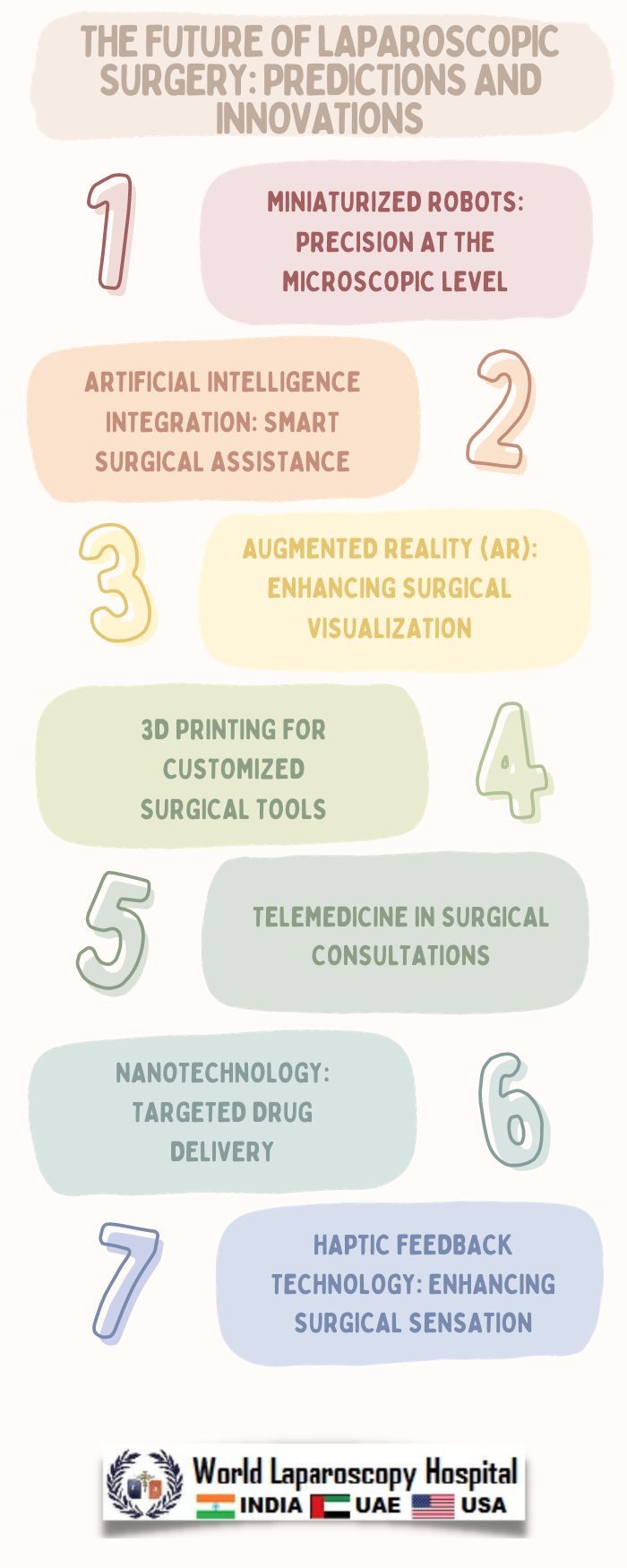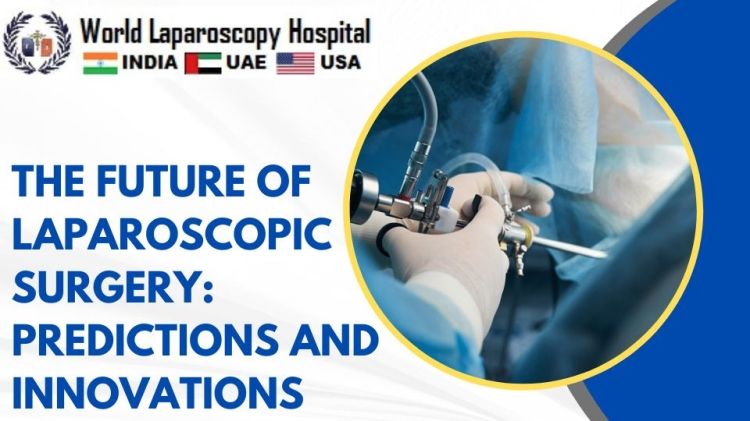Introduction:
Laparoscopic surgery has undergone remarkable transformations since its inception, and the future promises even more groundbreaking developments. This minimally invasive technique has revolutionized the field of surgery, offering patients faster recovery times, reduced scarring, and improved outcomes. As technology continues to advance, the landscape of laparoscopic surgery is on the brink of unprecedented innovations.

Evolution of Laparoscopic Surgery:
To understand the future, it's crucial to examine the journey of laparoscopic surgery. From its early days characterized by basic instruments and limited applications, the technique has evolved into a sophisticated and versatile approach. Advancements in imaging technologies, instrument design, and surgical techniques have propelled laparoscopic surgery into the mainstream, with procedures ranging from gallbladder removal to complex oncological interventions.
Current Challenges and Limitations:
Despite its numerous advantages, laparoscopic surgery faces challenges that drive the quest for innovation. Limited haptic feedback, restricted dexterity, and a steep learning curve for surgeons are areas ripe for improvement. Additionally, the cost of robotic systems and the need for specialized training pose barriers to widespread adoption. Addressing these limitations is key to unlocking the full potential of laparoscopic surgery.
Predictions for the Future:
Robotics Revolutionizing Surgical Precision:
The integration of robotics is expected to be a game-changer in laparoscopic surgery. Advanced robotic systems with artificial intelligence capabilities will enhance surgical precision, providing surgeons with intuitive control and real-time feedback. This shift towards robotic assistance aims to mitigate the limitations of traditional laparoscopic instruments, offering unparalleled accuracy and dexterity.
Miniaturization of Instruments:
The future of laparoscopic surgery lies in miniaturization. Smaller, more agile instruments will enable surgeons to access intricate anatomical spaces with reduced trauma. Micro-scale robotics may become commonplace, allowing for precise maneuvers in confined areas while minimizing tissue damage. This trend aligns with the growing demand for minimally invasive procedures and improved patient outcomes.
Enhanced Imaging Technologies:
Imaging technologies are poised to undergo significant advancements, enhancing the surgeon's ability to visualize and navigate within the body. Three-dimensional imaging, augmented reality, and virtual reality applications will provide a more immersive and detailed view of the surgical field. This not only improves accuracy but also facilitates better decision-making during complex procedures.
Artificial Intelligence in Surgical Decision-Making:
The integration of artificial intelligence (AI) will play a pivotal role in laparoscopic surgery. AI algorithms can assist surgeons in preoperative planning, real-time navigation, and postoperative analysis. Predictive analytics and machine learning models may contribute to personalized treatment plans, optimizing outcomes based on patient-specific factors.
Telemedicine and Remote Surgery:
The future of laparoscopic surgery extends beyond the operating room. Telemedicine and remote surgery will become more prevalent, enabling expert surgeons to perform procedures from a distance. This not only addresses geographic disparities in healthcare access but also facilitates knowledge-sharing among professionals globally.
Innovations in Specific Surgical Specialties:
Gynecology:
The future of laparoscopic gynecological surgery envisions more refined techniques for procedures like hysterectomies and ovarian surgeries. Robotic assistance and advanced imaging will enhance precision in delicate reproductive surgeries, reducing postoperative complications and recovery times.
Urology:
Laparoscopic urological procedures are poised for advancements, particularly in the treatment of prostate and kidney conditions. Miniaturized instruments and robotic platforms will enable urologists to perform intricate surgeries with improved precision, minimizing damage to surrounding tissues.
Gastroenterology:
nnovations in laparoscopic gastroenterological procedures will focus on improved imaging for early detection of gastrointestinal cancers and targeted interventions. Capsule endoscopy and advanced robotic systems will facilitate more effective and less invasive treatments for conditions like colorectal cancer.
Ethical Considerations and Patient-Centered Care:
As we delve into the future of laparoscopic surgery, it is imperative to address ethical considerations. The integration of technology should prioritize patient safety, informed consent, and equitable access to innovative procedures. Striking a balance between technological advancements and maintaining the human touch in healthcare is crucial for ensuring patient-centered care.
The Road Ahead: Collaboration and Training:
The successful implementation of future innovations in laparoscopic surgery relies on collaborative efforts among healthcare professionals, researchers, and technology developers. Ongoing training programs are essential to equip surgeons with the skills required to navigate advanced robotic systems and leverage cutting-edge technologies. Establishing standardized protocols and guidelines will ensure the ethical and safe integration of these innovations into medical practice.
Conclusion:
The future of laparoscopic surgery holds immense promise, with predictions and innovations set to redefine the way we approach medical procedures. From robotic assistance to enhanced imaging technologies and artificial intelligence, the trajectory of laparoscopic surgery points towards a future of unprecedented precision, reduced invasiveness, and improved patient outcomes. As we stand at the cusp of this transformative era, collaboration, ethical considerations, and continuous training will be the cornerstones of realizing the full potential of laparoscopic surgery in the years to come.
